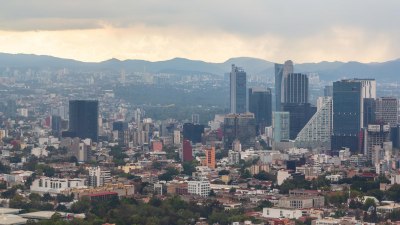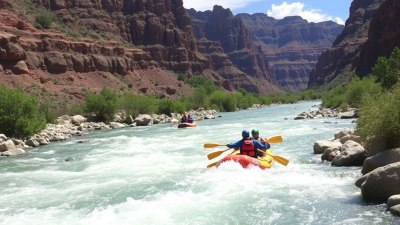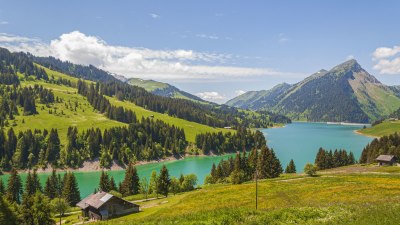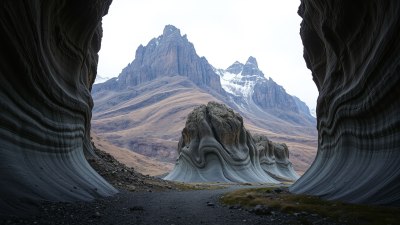How to Plan a Trip to Patagonia Even If the Weather Is Unpredictable
Discover essential tips for planning a successful trip to Patagonia amid unpredictable weather conditions.
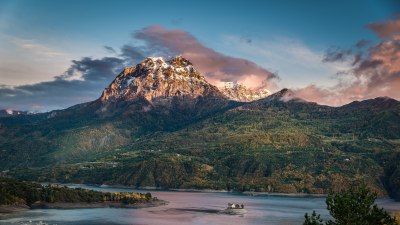
Planning a trip to Patagonia can be both thrilling and daunting, especially considering its notorious and unpredictable weather. From majestic mountains to stunning glaciers, Patagonia offers breathtaking landscapes that draw adventure seekers from around the world. The key to enjoying a memorable trip lies in effective planning. This article delves into practical tips, essential gear, and useful insights that will help you navigate through the uncertainties of Patagonia's weather.
Understand the Weather Patterns
To plan your trip effectively, it's crucial to acquire a fundamental understanding of Patagonia’s weather patterns. This region boasts a highly variable climate influenced by geographical factors, including proximity to the Andes, Pacific Ocean currents, and changes in altitude. Weather changes can happen rapidly, so travelers should prepare for multiple conditions within a single day—sunshine can quickly turn into rain or snow.
The summer months (December to February) are generally milder, making them the peak season for visitors. However, it is important to note that even in summer, conditions can be unpredictable. Accordingly, it’s advisable to check long-range forecasts, but also to remain flexible in your itinerary to accommodate sudden weather shifts.
Choose the Right Time to Visit
Selecting the optimal time for your trip is essential. During summer, temperatures can reach a comfortable 70°F (21°C) in the lower elevations, while the higher Andes remain cooler. Some travelers prefer the shoulder months of spring (September to November) and fall (March to May) to avoid crowds and enjoy beautiful fall foliage, but you should be aware that these seasons can be particularly windy and chilly.
Deciding when to go also depends on what activities you plan to undertake. Some hiking trails may be closed due to snow in the shoulder seasons, while iconic sights like Perito Moreno Glacier and Torres del Paine National Park are best experienced under clear skies. Research specific destinations to determine the ideal times for visiting.
Pack Smart
The key to a successful Patagonian adventure lies in packing the right gear. Given the region's unpredictable weather, it is essential to bring versatile clothing that can easily adapt to changing conditions. Layers are paramount; include moisture-wicking base layers, insulating mid-layers, and a waterproof, breathable outer layer.
Additionally, a good pair of hiking boots is essential for tackling various terrains. Don’t forget accessories like hats, gloves, and scarves to protect against wind and cold. Packing lightweight and quick-drying gear can also save space and weight in your luggage.
Consider Local Transportation
Understanding how to get around Patagonia is crucial for a seamless trip. There are limited public transportation options, so many travelers opt for rental cars or guided tours. If you choose to drive, be prepared for long distances between attractions and variable road conditions.
For eco-conscious travelers, consider using buses or shared shuttles where available. Also, hiring local guides can be beneficial as they offer expertise about the area and help navigate the unpredictable weather. They can also lead you to lesser-known spots that might be less affected by weather conditions.
Have a Flexible Itinerary
One of the most important aspects of planning a trip to Patagonia is incorporating flexibility into your itinerary. Given the weather’s unpredictability, allow for buffer days in your schedule. This way, if a planned hike or a visit to a landmark gets canceled due to poor conditions, you can easily shift your plans without feeling rushed or disappointed.
Prioritize your must-see attractions, but also leave room for spontaneity. Some of the most beautiful moments in Patagonia can arise unexpectedly. Conversations with locals or fellow travelers may lead you to discover hidden gems that aren’t in your original plan.
Engage with Local Cultures
Patagonia is not just about stunning landscapes; it is also rich in culture and history. Take the time to learn about the indigenous communities, such as the Mapuche people, who have lived in the region for centuries. Understanding their customs, stories, and traditions can greatly enhance your travel experience.
Participating in local events or festivals can also add depth to your trip while offering protection against unpredictable weather. Words of local lore will not only enrich your experience but may also provide context for the environment you are exploring.
Don’t Overlook Safety
Safety should always be a priority when adventuring in Patagonia, especially due to quickly changing weather conditions. Always inform someone of your itinerary, especially if heading into remote areas, and ensure that you carry a map, compass, or GPS device, as cell service can be spotty in isolated regions.
Additionally, when hiking, consider joining guided tours where experienced guides can provide safety advice along with insights about the terrain. Always listen to local warnings and advisories about weather conditions before heading out on excursions.
Enjoy Patagonian Cuisine
Food can be an unforgettable part of your travel experience in Patagonia. Be sure to try local specialties, such as Patagonian lamb, freshly caught fish, and traditional empanadas. Dining in local restaurants also offers a unique environment to meet fellow travelers and locals while enjoying delicious meals after a long day of exploration.
If you are a fan of wines, make sure to sample some Patagonian wines from the region’s vineyards, known for producing exceptional quality. Gather away from the chaos of tourist dining spots to discover family-run eateries that serve traditional recipes with local ingredients.
Prepare for Adventures
Patagonia is a playground for outdoor enthusiasts, boasting incredible opportunities for hiking, trekking, and water sports. Always check the weather updates before embarking on outdoor activities, and choose suitable routes depending on current conditions. Trails might be closed, wet, or muddy, making proper planning essential for safety.
If you’re brave enough, consider experiencing extreme sports like kayaking or ice climbing, but do so under professional guidance. The beauty of Patagonia often calls adventurers, and it’s vital to respect nature’s powers by being adequately prepared for any challenge.
Make the Most of Your Journey
Ultimately, planning a trip to Patagonia amid unpredictable weather is all about embracing spontaneity while being prepared for anything. With a flexible approach, knowledge of weather patterns, and accurately packed gear, you can make the most of this mystical land full of raw beauty. Allow yourself time to connect with nature and indulge in adventures, and you will surely leave with unforgettable memories of Patagonia.

